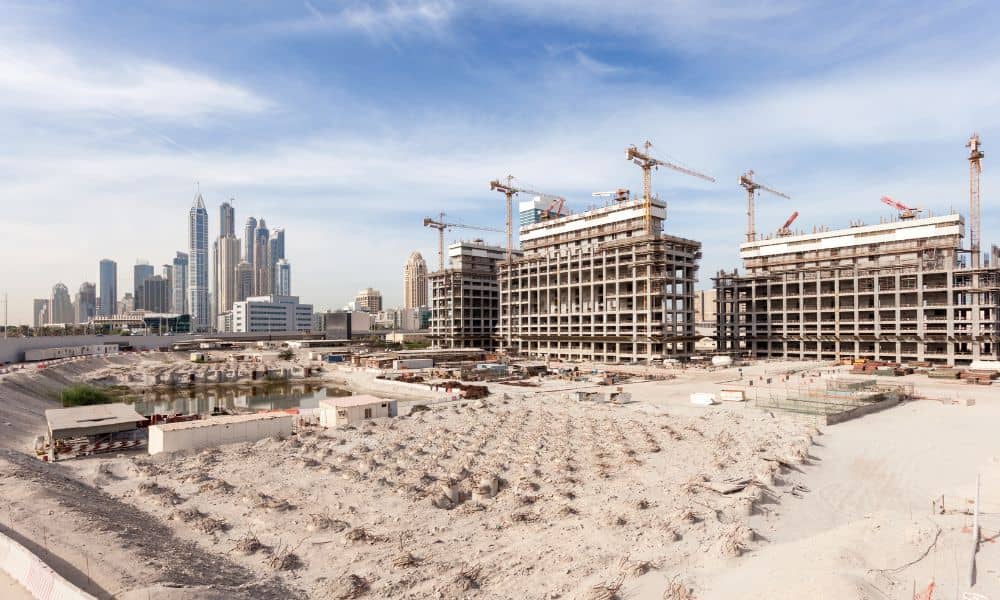
LiDAR mapping is changing how land surveyors collect data. It sends out laser pulses from a drone to make detailed 3D pictures of the land, buildings, and trees. It’s quick, accurate, and saves time and money. But when a big drone security scare happens anywhere in the world, local drone rules can change—and that can affect survey teams that depend on LiDAR.
Not long ago, a drone incident overseas raised concern about airspace safety. Several drones were seen flying over a military base, leading many to question how well drones are tracked and controlled. Even though it happened far away, it could still affect Pittsburgh. When events like this happen, the Federal Aviation Administration (FAA) often reviews and updates drone rules. For local surveyors using LiDAR mapping, that could change when and where they can fly.
Why a Drone Incident Abroad Matters to Pittsburgh
It might seem strange that a drone scare in another country could affect work here, but airspace safety is global. When one country strengthens its drone laws, others often follow.
In the U.S., that can mean more Temporary Flight Restrictions (TFRs), stricter ID checks for drones, or slower approvals near airports. For LiDAR mapping projects, even a small change can cause delays.
Think about the airspace around Pittsburgh International Airport and Allegheny County Airport. Drone pilots already need special permission to fly near them. If new safety rules expand those areas, survey teams might have to wait longer to fly. Delays like that can slow down design work and construction.
How Tighter Airspace Rules Affect Projects
LiDAR mapping is now a big part of land surveying and construction. Builders and engineers use LiDAR data to plan grading, drainage, and building designs. But each flight depends on airspace access and safety.
Imagine a survey team getting ready to scan a riverfront site in the South Side. They file their paperwork, but a new airspace restriction shuts down drone flights for a week. Without approval, they can’t collect data. The team either reschedules or uses ground-based scanning, which can slow the project.
Even short delays can cause problems. Permits, foundation work, and construction timelines may all get pushed back. That’s why survey companies watch drone regulations just as closely as weather forecasts.
What’s at Stake for Surveyors

Surveyors already follow strict FAA rules. Every LiDAR drone flight must meet Part 107 standards, include Remote ID tracking, and stay within safe altitude limits. After a security scare, the FAA often increases inspections or creates short-term no-fly zones.
Pittsburgh’s busy airspace makes things harder. Stadiums, hospitals, and universities—like Acrisure Stadium and UPMC—often fall under restricted zones. During big events, no-fly areas can stretch several miles across the city.
For LiDAR mapping companies, that means they must plan ahead. A small rule change can mean losing a full workday or missing a clear-weather window.
How Surveyors Are Adapting
Many local survey teams are already adjusting. They plan flights earlier, track daily FAA updates, and train pilots to handle quick changes.
If a drone can’t fly, they switch to ground LiDAR or tripod scanners. These still capture detailed elevation data without leaving the ground. It takes more time, but it keeps projects on track.
Good communication also helps. Surveyors now explain to clients why drone rules can shift and how that affects flight schedules. Being open builds trust and shows professionalism. It also sets licensed surveyors apart from untrained hobbyists.
What Clients Should Know
If you’re a builder, developer, or homeowner planning a project, it helps to know how drone rules might affect your plans. LiDAR mapping provides fast, precise results—but it depends on open skies.
When choosing a surveyor, ask if they’ve checked airspace restrictions for your site. If your property is near an airport or stadium, they’ll need extra time for approvals. A licensed surveyor will handle this for you and update you if any delays come up.
Working with a surveyor who understands both LiDAR mapping and FAA laws helps protect your project’s schedule and accuracy.
Looking Ahead
Drone technology keeps improving, but so do safety rules. Events around the world remind everyone that drone use must be responsible. For Pittsburgh, that means surveyors need to stay alert and flexible.
Our city is growing fast, with new bridges, housing, and riverfront projects. Each one needs accurate elevation and boundary data. LiDAR mapping delivers that data faster than traditional tools, helping projects move forward smoothly.
Still, as the skies get busier, survey teams must keep adapting. For clients, the best choice is simple: hire professionals who know both the technology and the law. That’s how to keep building safely and smartly—no matter what happens above the horizon.